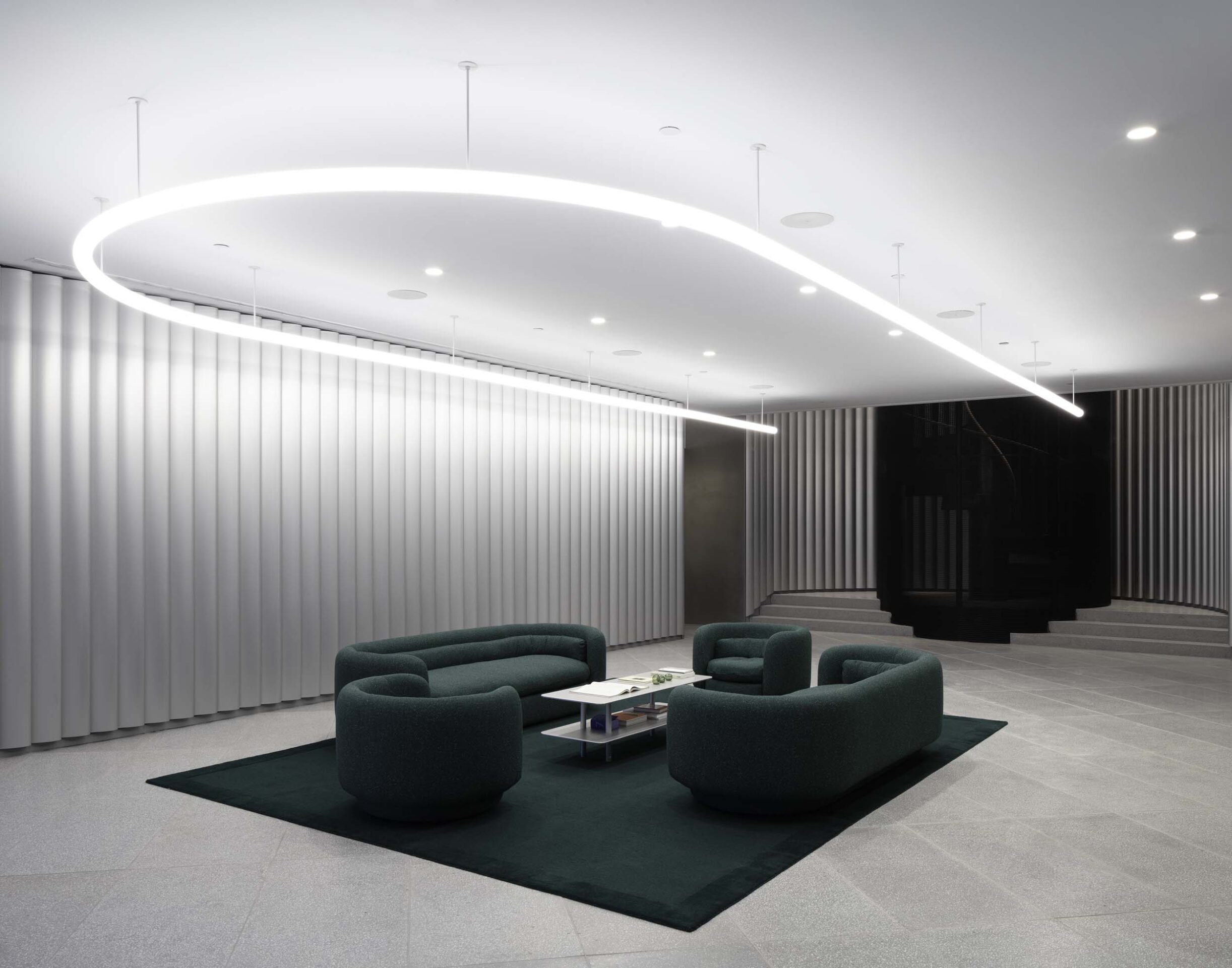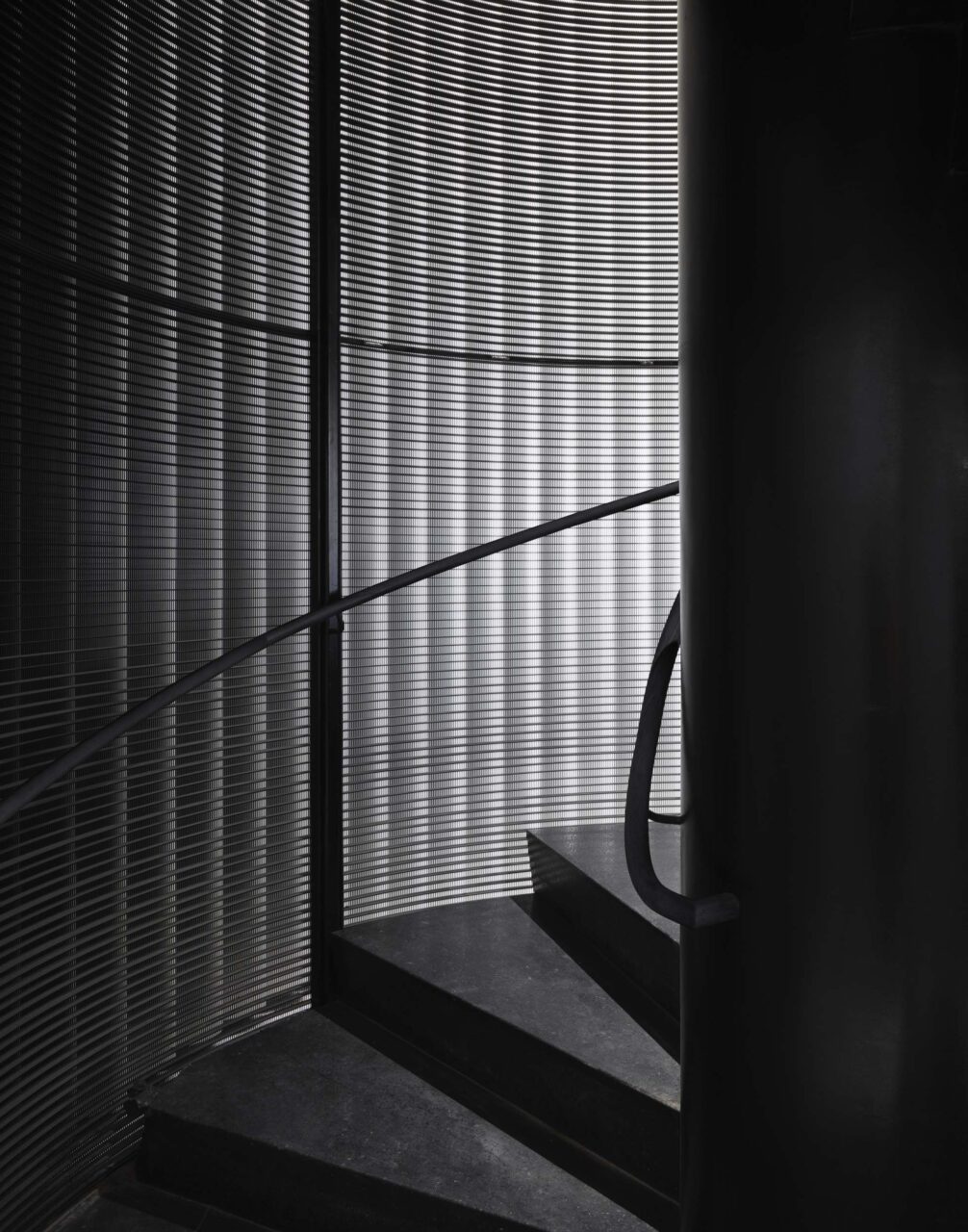After a stretch of waterfront in Brooklyn’s Greenpoint and Williamsburg neighborhoods was rezoned in 2005, a crop of residential towers bloomed in what was previously an industrial area. One of them—The Bellslip, developed by Brookfield and designed by Handel Architects—is set along the banks of Newtown Creek as it empties into the East River. (The area is now called Greenpoint Landing.) Leong Leong joined the project to lead the design of The Bellslip’s amenities. The effort included the building’s ground-floor lobbies, workout spaces, a shared dining area, a pool lounge, co-working suites, and exterior terraces.
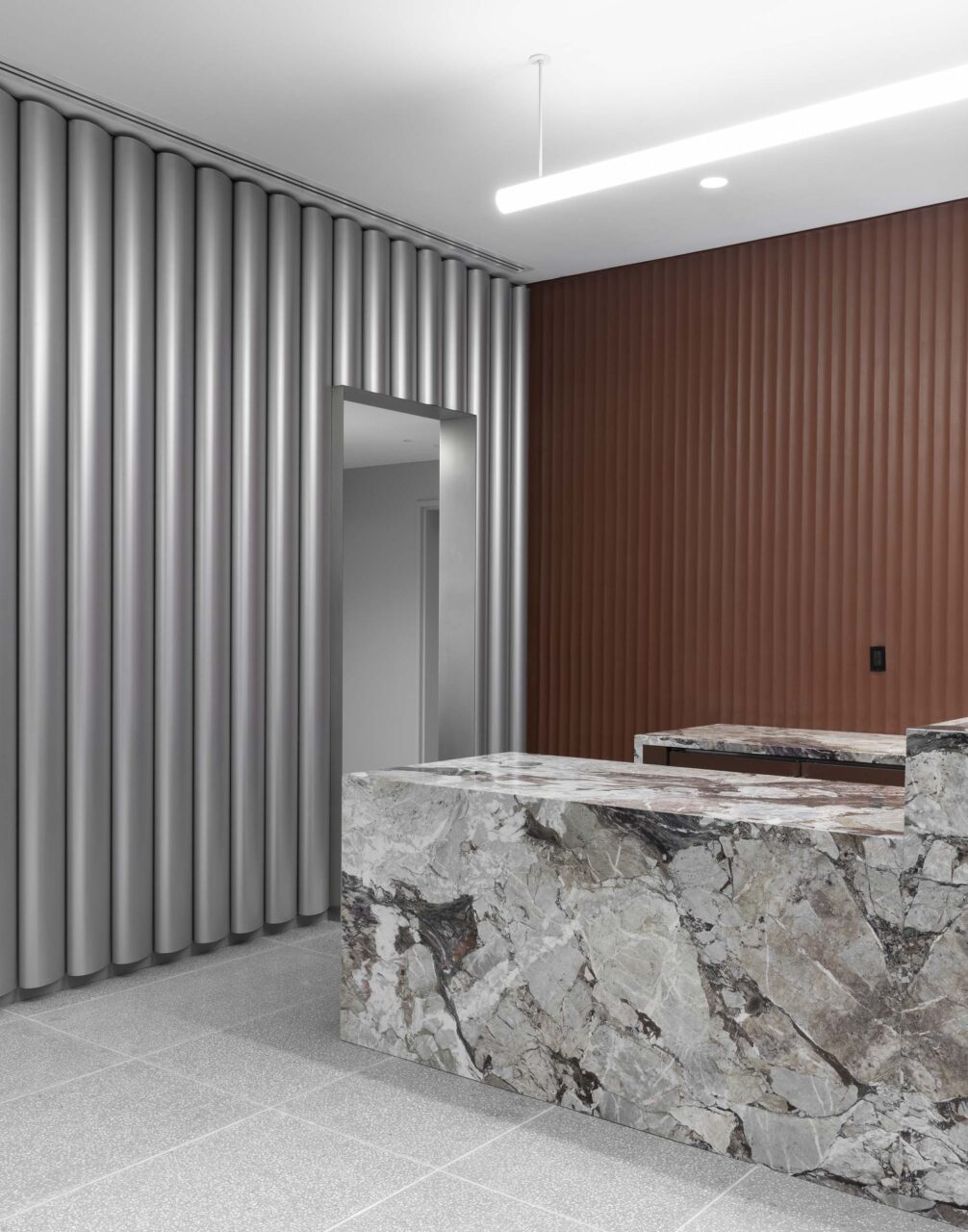
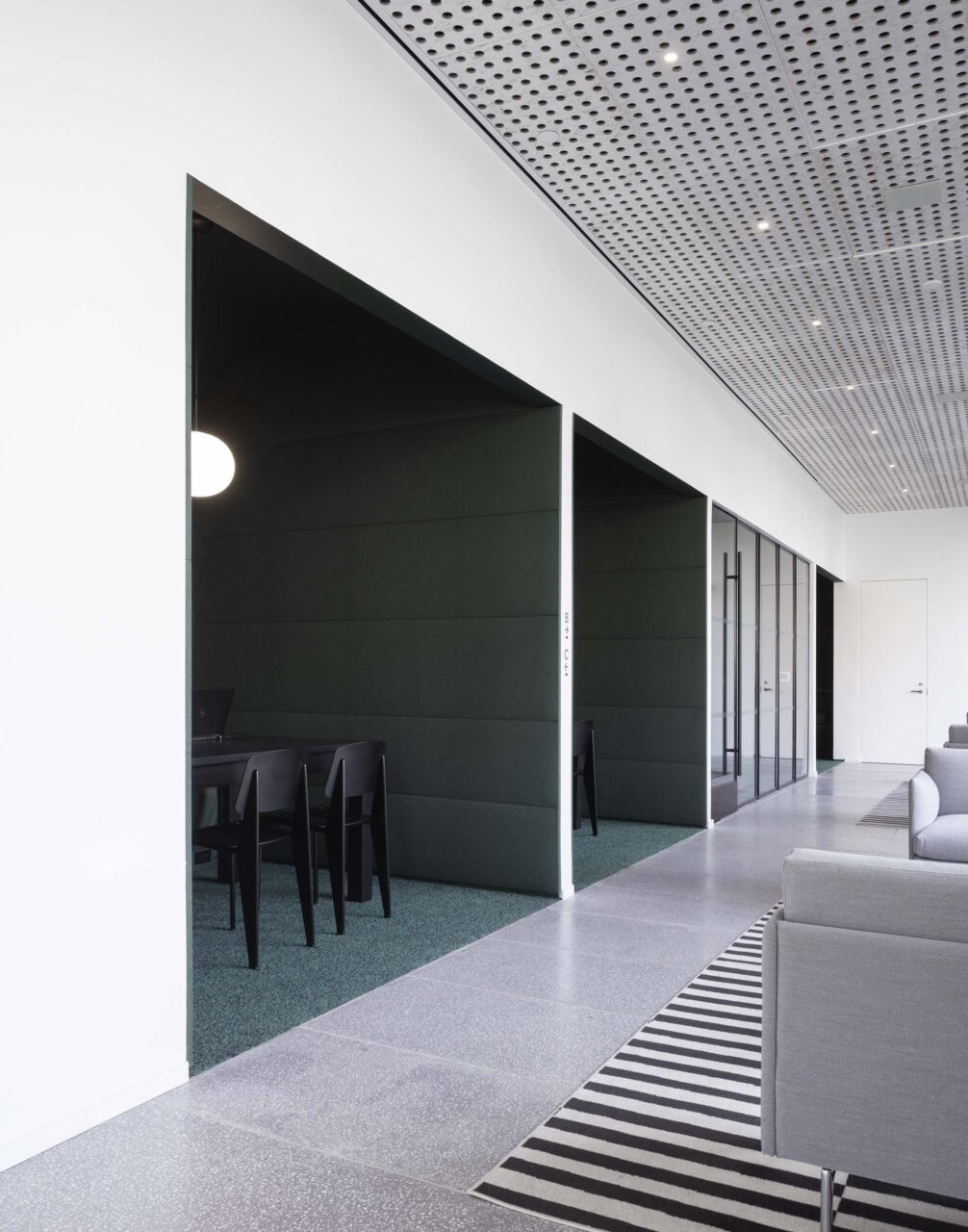
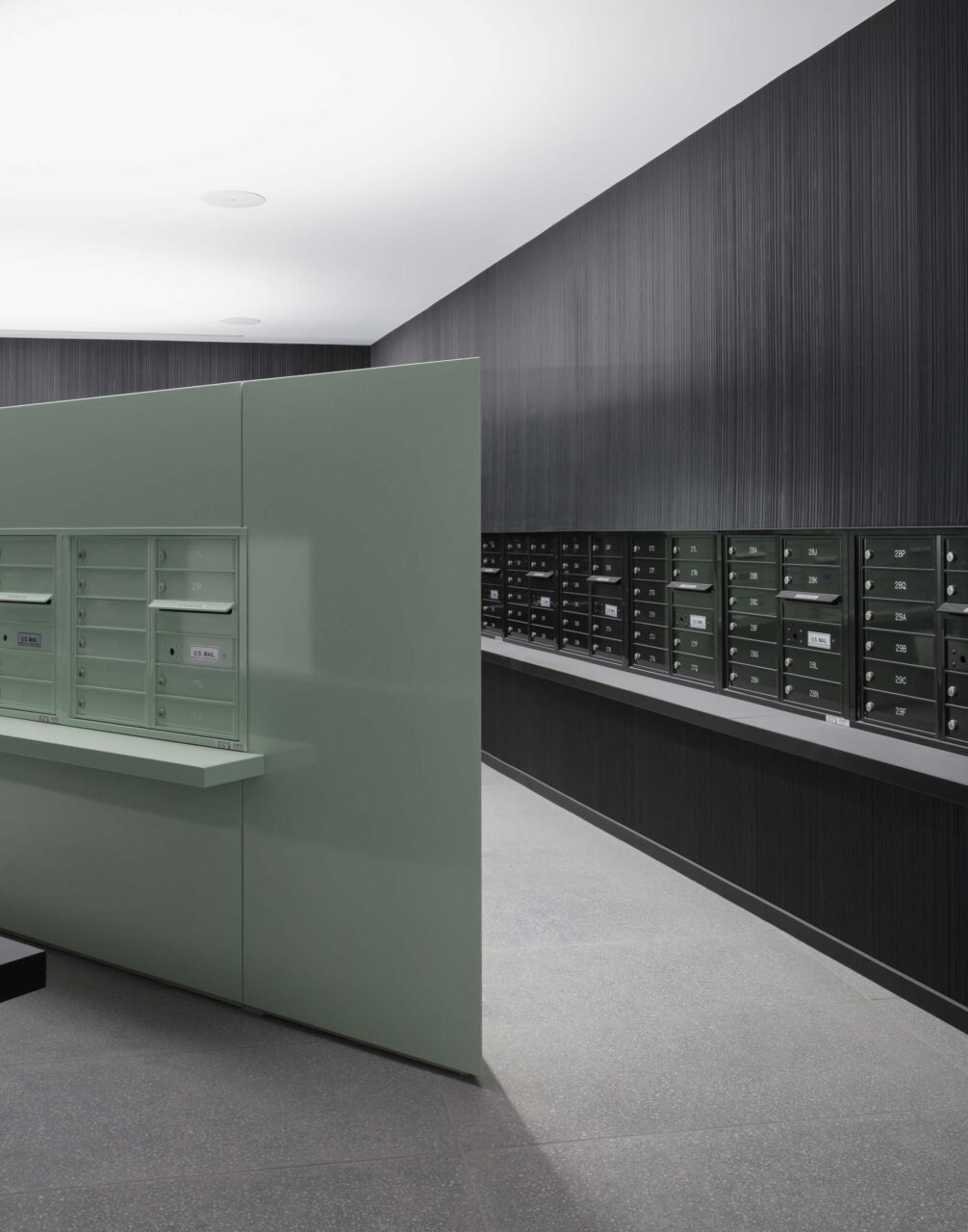
A sunlit, publicly accessible urban room greets all visitors. “When we developed the project, we were thinking through questions like ‘Who’s going to use this building?’ and ‘How do we really make this public space?’” Christopher Leong, partner at Leong Leong, told AN Interior on a recent visit. (He leads the office with his brother Dominic Leong.) Large, pill-shaped partitions with integrated seating rotate, offering flexibility. Tailored to the project, the pills can be moved by one person to resize the room for gatherings of different sizes, additionally supported by furniture from Muuto and a curving Osaka sofa designed by Pierre Paulin for La Cividina. Long, tubular custom light fixtures designed by Dot Dash run overhead. On the opposite side of the entry, a coffee shop features a lively stone counter with a fluted red back wall.
The processional entrance into the main lobby is marked by a threshold between two curving walls lined in aluminum extrusions. Custom-manufactured by Zahner based on early designs that came from bending sheets of paper, the airplane wing–like profile catches light with its rolled surface. A bathroom is hidden behind one wall, accessed by a motorized door clad in matched aluminum pieces. The walls read as thick shapes; they help negotiate a shift in the building’s structure, in addition to delineating a public area from a private one.

Within, the main lobby is cooler and sleeker. A formal staging of green chairs and sofas designed by Philippe Malouin for SCP is the space’s focus. A metal circular stair leads to upper-level amenities and conceals the residents’ entrance, and the mail room—dark and populated with mint-green mailboxes—is set within the thick aluminum-clad wall. Above, a second-floor gym suite offers bright workout spaces and grids of lights also realized with Dot Dash.
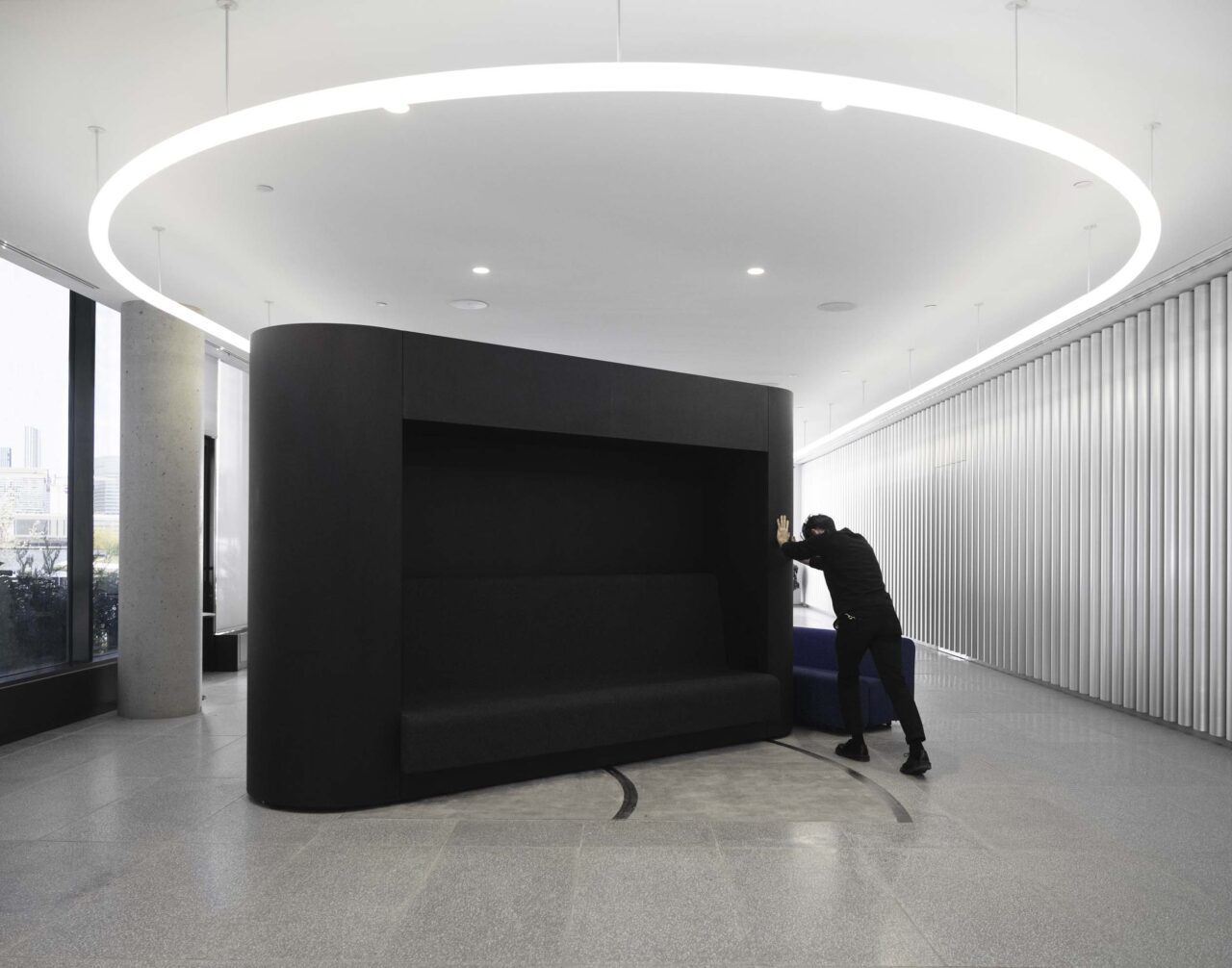
On the third floor, two suites offer spaces for work and play. The co-working area was designed before the pandemic, but its conference rooms, lined in deep green fabric, are a hot commodity for the building’s WFH warriors. A communal living room stages cobalt-blue sofas from HAY alongside plants, the room’s light softened by sheer curtains. The pool lounge opens to the aquatic terrace; it doubles as another desirable workspace, as its curvy interior, lined in white-oak slats, is a comfy place to camp out. At the end of the suite, the kitchen in the reservable room is lined in amazonite quartz slabs, and a long, communal table anchors the dining area. Here, a new emerald-velvet modular sofa from Paustian mixes with vintage Charlotte Perriand chairs. Throughout, a perforated OSB ceiling controls sound and establishes another visual texture. The spaces, airily open, are anchored by vibrant furniture and material choices.
Over the years, Leong Leong has developed its interior-design expertise through a series of object, furniture, exhibition, gallery, and showroom commissions. Leong remembers prior eras when environments weren’t discussed in holistic terms: Modernist designers produced both space and objects—architecture and interiors, broadly—but then, somehow, the disciplines bifurcated along the way. Interior design requires a “different sensibility to think about atmosphere, texture, and color,” Leong reflected. To make good interiors, you “have to think much more about human behavior and interaction.”
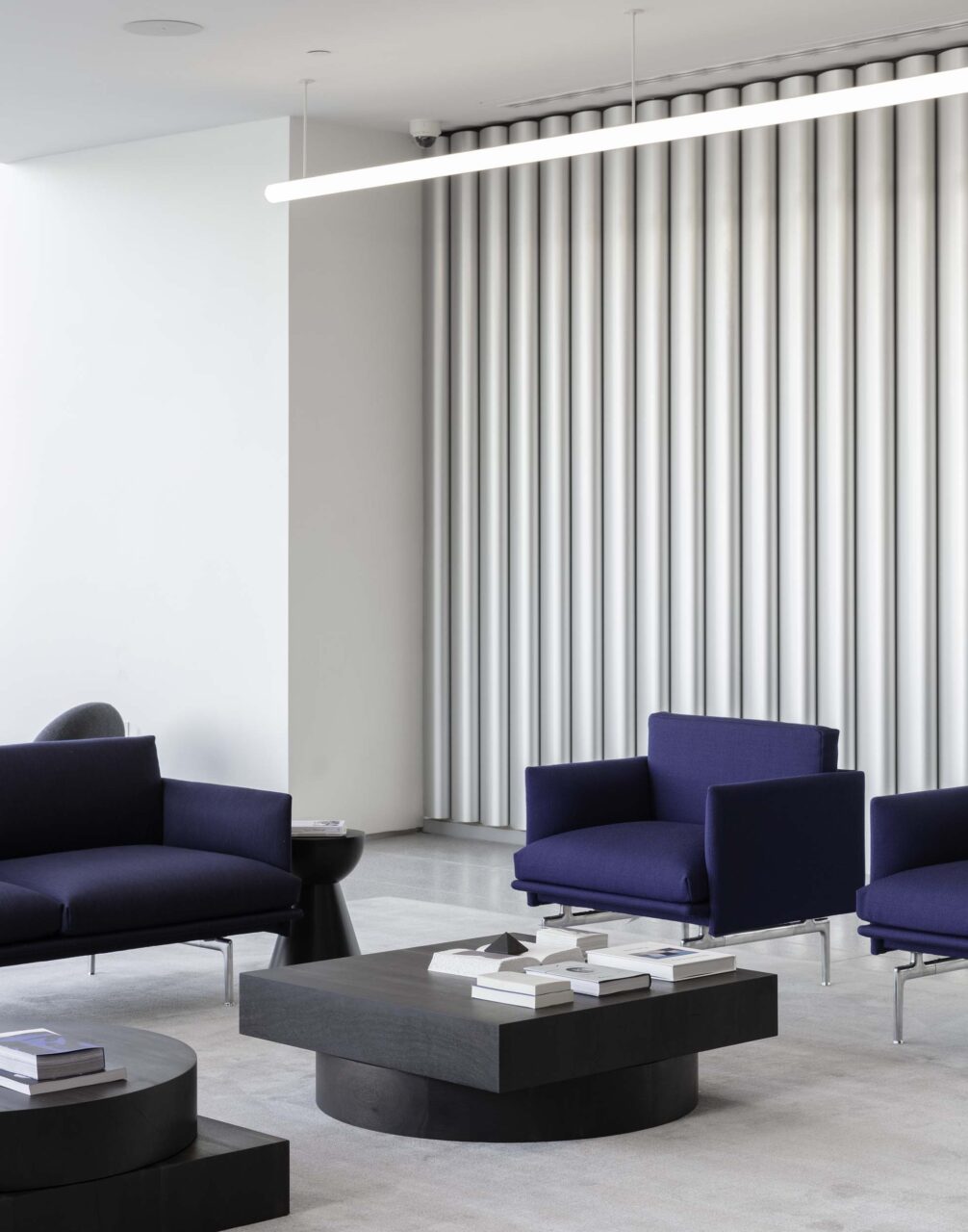
With its color-blocked furniture layouts supported by neutral, textural backdrops, The Bellslip’s amenities offer zones for activity and solace. The project was a bit of an experiment for Leong Leong, but it paid off: “It has opened a new world of possibilities,” Leong said.
